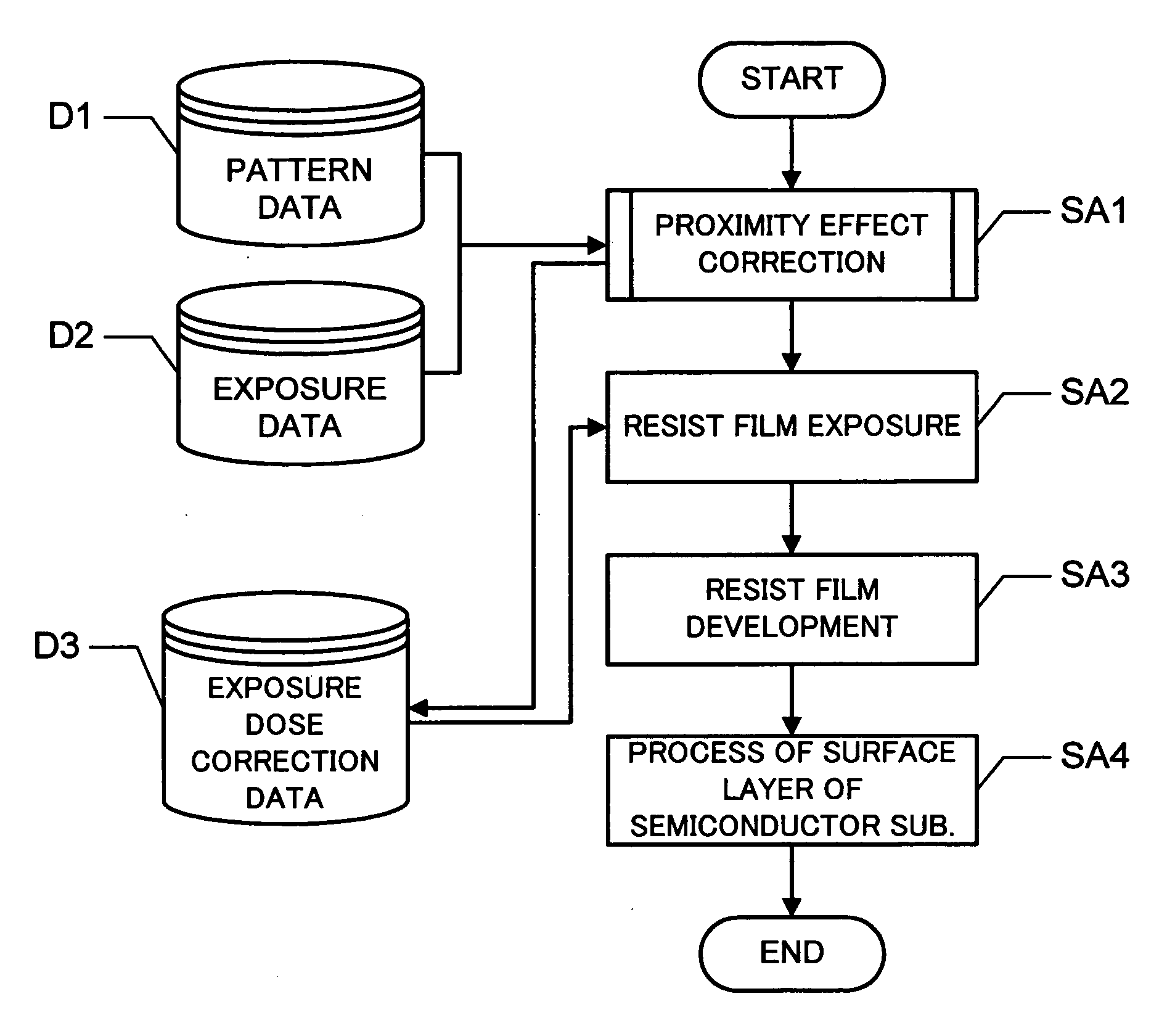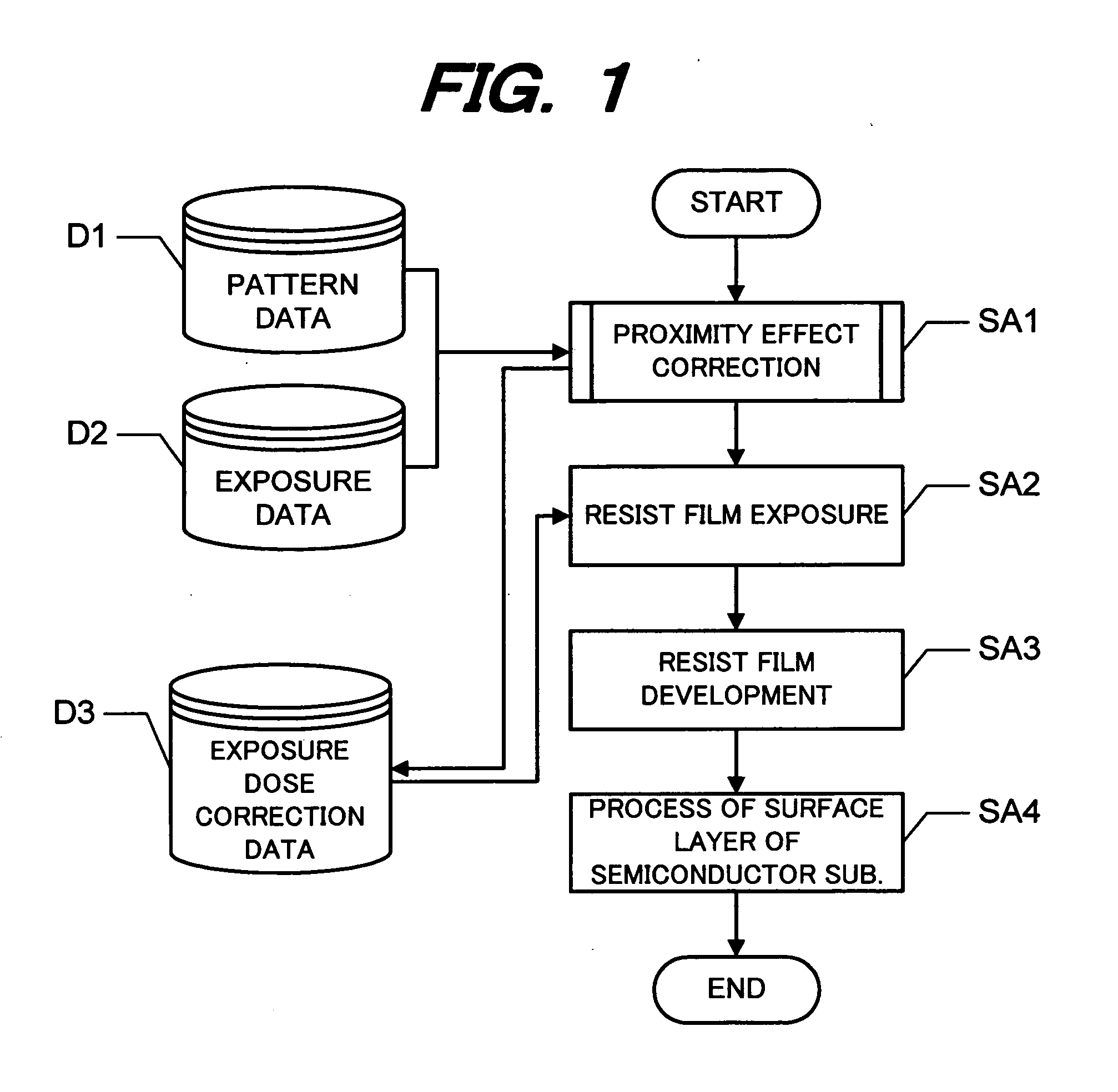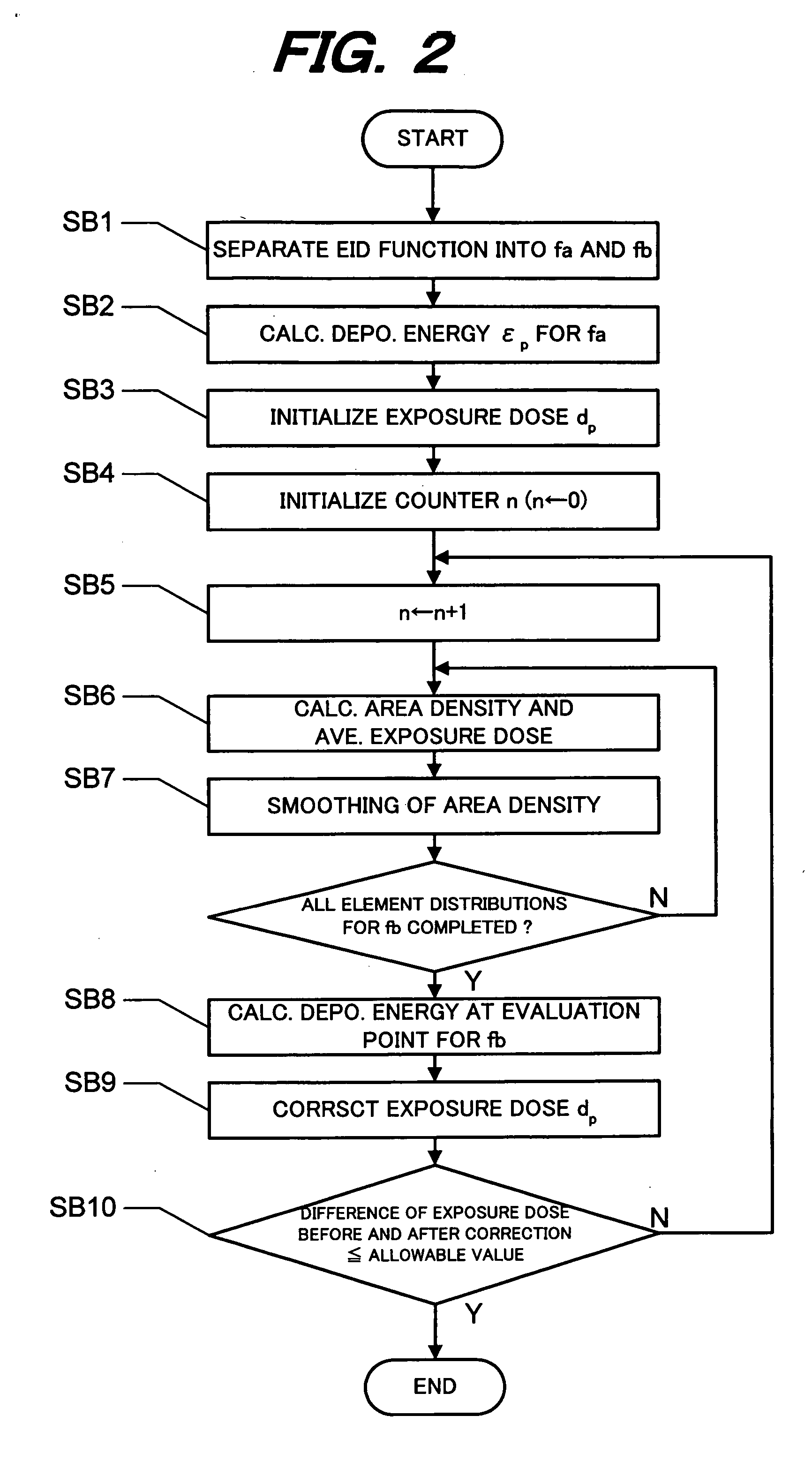Charged particle beam projection method and program used therefor
- Summary
- Abstract
- Description
- Claims
- Application Information
AI Technical Summary
Benefits of technology
Problems solved by technology
Method used
Image
Examples
first embodiment
[0048]FIG. 1 is a flow chart illustrating a semiconductor device manufacture method using a projection method according to the Pattern data D1 defines the shape, size, position and the like of a plurality of patterns defined on a pattern layout plane. Exposure data D2 defines a relation between an exposure pattern unit to be exposed by one shot of an electron beam and an exposure dose for the exposure pattern unit. At Step SA1, proximity effect correction is performed by using the pattern data D1 and exposure data D2 to generate exposure dose correction data D3. The exposure dose correction data D3 includes a proper exposure dose assigned to each exposure pattern unit. At Step SA2, a resist film is exposed with an electron beam in accordance with the exposure correction data D3. At Step SA3, the exposed resist film is developed. At Step SA4, a surface layer of the semiconductor substrate is processed by using the developed resist film as a mask.
[0049]FIG. 2 is a flow chart illustra...
second embodiment
[0097]FIG. 9 is a flow chart illustrating a semiconductor device manufacture method according to the At Step SC1, a proximity effect correction is conducted by referring to pattern data D1 and exposure data D2 to generate pattern correction data D4. The pattern correction data D4 contains a shift amount of a side of a pattern assigned to each correction unit constituting an exposure pattern. At Step SC2, an exposure mask is formed in accordance with the pattern correction data D4. At Step SC3, a resist film is exposed with an electron beam and developed, by using the formed exposure mask. At Step SC4, a surface layer of the semiconductor substrate is processed by using the developed resist film.
[0098]FIG. 10 is a flow chart illustrating the proximity effect correction process SC1 shown in FIG. 9. In the first embodiment, a proper exposure dose is obtained for each exposure pattern unit, whereas in the second embodiment, the same exposure dose is set to all exposure pattern units, a...
third embodiment
[0113] Prior to describing the third embodiment, description will be directed to a method of calculating a corrected area density disclosed in JP-A-2005-101501. This method takes into consideration the case in which various kinds of materials are distributed on the plane of lower-level layers below the resist film and distribution densities are irregular on the plane.
[0114]FIG. 12 shows a lamination structure of a substrate for which the corrected area density is calculated. A plurality of layers L are formed on a substrate 20, and a resist film 21 is formed as an uppermost layer. The n-th layer as counted from the resist film 21 is represented by L(n). A pattern area density map is defined on the plane of the substrate as in the case of the first and second embodiments.
[0115] A reflection coefficient is represented by rn, corresponding to the number of charged particles transmitted through the layer L(n−1) and reflected by the layer L(n). A transmission coefficient is represented ...
PUM
 Login to View More
Login to View More Abstract
Description
Claims
Application Information
 Login to View More
Login to View More - R&D
- Intellectual Property
- Life Sciences
- Materials
- Tech Scout
- Unparalleled Data Quality
- Higher Quality Content
- 60% Fewer Hallucinations
Browse by: Latest US Patents, China's latest patents, Technical Efficacy Thesaurus, Application Domain, Technology Topic, Popular Technical Reports.
© 2025 PatSnap. All rights reserved.Legal|Privacy policy|Modern Slavery Act Transparency Statement|Sitemap|About US| Contact US: help@patsnap.com



